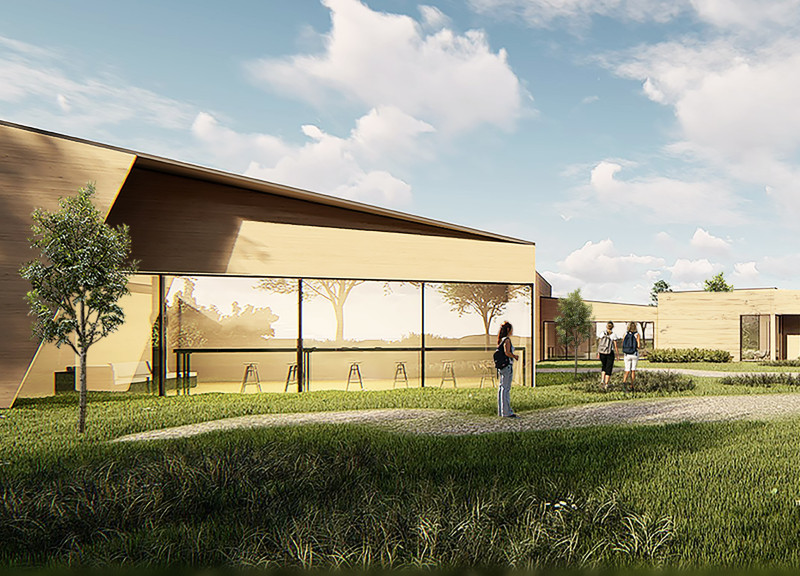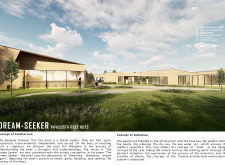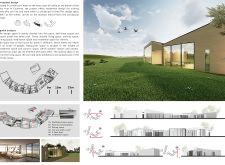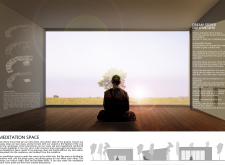5 key facts about this project
Situated in a context where natural beauty and urban fabric converge, this project focuses on creating a seamless interaction between indoor and outdoor experiences. The design reflects a profound understanding of the site and its conditions, ensuring that the building is both visually integrated into the landscape and mindful of its ecological footprint. The integration of the local climate in the design phases has led to the incorporation of passive design strategies. This approach emphasizes natural ventilation, daylighting, and thermal comfort, reducing energy consumption and enhancing the occupants' overall well-being.
Key architectural elements of the project include an innovative facade system that employs locally sourced materials, reinforcing the project's commitment to sustainability. The use of materials such as exposed concrete, sustainably harvested timber, and high-performance glass not only serves structural purposes but also enriches the sensory experience of the space. The play of textures, colors, and finishes animates the facade across different times of the day, leading to a dynamic visual narrative that engages viewers from diverse perspectives.
Spatial organization is another critical aspect of the design, presenting a thoughtful arrangement that fosters collaboration and interaction. Within the project, open-plan areas are juxtaposed with secluded spaces, allowing for both social engagement and necessary privacy. This careful consideration enhances functionality across various uses, catering to both individual and collective needs. The inclusion of flexible spaces further supports diverse activities, making the project versatile and adaptive over time.
Unique design approaches manifest through the project’s commitment to cultural representation, where local heritage is celebrated through architectural language. The form and layout echo traditional design motifs, yet are interpreted with a modern sensibility, reflecting a commitment to blending past and present. Landscape elements, including native plant species and permeable paving, create a biophilic connection, inviting nature into the architectural narrative and reinforcing a sustainable ethos.
Furthermore, the interior spaces are designed with an emphasis on human scale and comfort. Craftsmanship is evident in the selection of furnishings and fixtures, which are chosen to complement the architectural framework while promoting functionality. Natural materials are prioritized, fostering an inviting atmosphere that connects occupants to the environment. This emphasis on materiality, paired with thoughtful detailing, enhances the tactile experience, inviting users to engage fully with their surroundings.
The project fundamentally represents a turning point in how architecture can respond to the intricacies of place and purpose. It extends beyond mere physicality to promote community interaction, environmental stewardship, and aesthetic appreciation. Each component of the design has been introspectively crafted, leading to an outcome that invites ongoing exploration and engagement.
To delve deeper into the nuances of this architectural endeavor, readers are encouraged to explore the project presentations, focusing on aspects such as architectural plans, architectural sections, architectural designs, and architectural ideas. This thorough examination will provide more insights into how the project embodies innovative thought and practical execution within the evolving landscape of modern architecture.


























